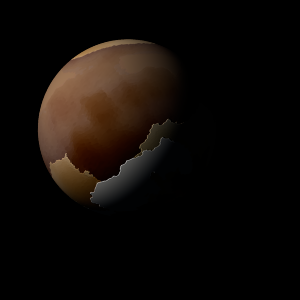|
|
Space Astro
|
Info for exoplanet "Euke"
| Scientific (actual) data |
|---|
| Name | Kepler-1794 c |
| Planet status | Confirmed |
| Radius | 0.160069 |
| Orbital period | 9.76298 |
| Semi major axis | 0.0821 |
| Orbit eccentricity | 0 |
| Inclination | 89.68 |
| Discovered | 2017 |
| Updated | 2024-06-13 |
| Tzero tr | 2454970 |
| Impact parameter | 0.499 |
| Temperature (kelvin) | 703 |
| Publication | Announced on a website |
| Detection type | Primary Transit |
| Radius measurement type | Primary Transit |
| Alternate names | KOI-2096.01, KOI-2096 c |
| Star name | Kepler-1794 |
| Right ascension | 300.62° |
| Declination | 45.79° |
| Mag v | 15.497 |
| Mag i | 14.905 |
| Mag j | 13.718 |
| Mag h | 13.248 |
| Mag k | 13.031 |
| Star distance | 561.229 |
| Star metallicity | 0.02 |
| Star mass | 0.812 |
| Star radius | 0.6759 |
| Star sp type | K2V |
| Star age | 14 |
| Star temperature | 4940 |
| Star alternate names | 9307509, KOI-2096 |
| Wikipedia article | Kepler-1794 c |
Back
| |
| Fictional info (?) |
|---|
| Suggested name | Euke |
| Planet type | Warm planet |
| As seen relative to the fixed stars, it rotates on its axis exactly two times for every four revolutions it makes around Kepler-1794.
It may have had helium oceans in the past, but these would have vaporized as the temperature rose due to a runaway greenhouse effect. |
| Atmosphere | Ammonium hydrosulfide (NH4SH) | 54% |
| Oxygen | 24% |
| Helium | 14% |
| 2H2O | 4.3% |
| Water vapor | 2.7% |
| Hydrogen | 0.076% |
| Sulfur dioxide | 0.051% |
| Ammonia | 7.8E-5% |
| Atmospheric pressure | 1.8 bar |
 |
| No known satellites |
| Google search for Euke |
|
Website by Joachim Michaelis
|
|
|
|